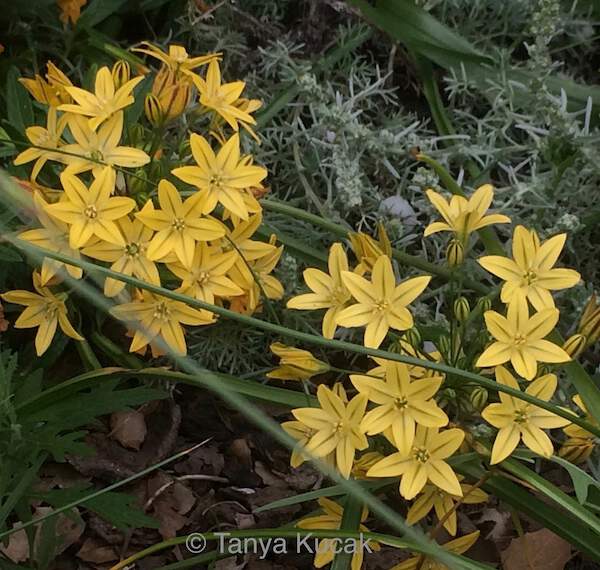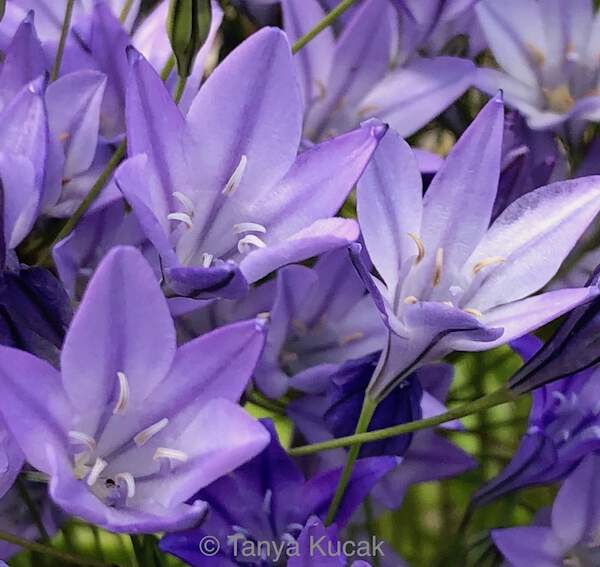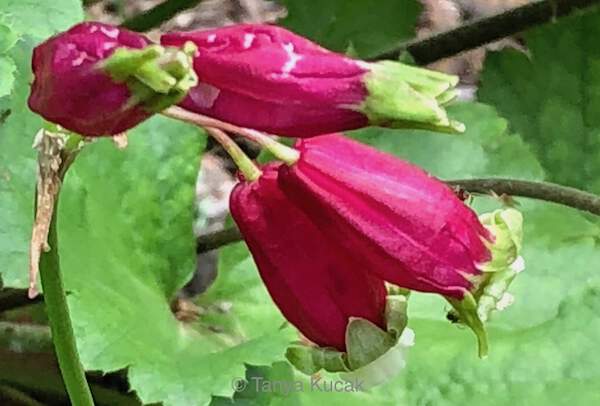
The element of surprise is an unappreciated part of gardening. If you spend time in your garden regularly, you're bound to discover new delights. One way to design this element into your garden is to plant native bulbs. Even if you know where they're planted and you look for them every day, it's still a gift to see the first bloom. Since dryland bulbs need to stay dry when they go dormant in summer and fall, you can plant them under or near oaks or summer-dry shrubs. Bulbs are outstanding pollinator and habitat plants, need minimal maintenance, and live a long time.
Spring is the time to research which bulbs you want, whether to plant them in the garden or in containers, and where to find them. Calscape lists native nurseries where each species might be available, and many Dutch bulb growers have long been cultivating a few California natives. Order bulbs in summer for best choice and discounts. The bulbs will be delivered in the fall. Plant the bulbs in October or November to take advantage of winter rains. Flowering occurs between late winter and early summer and generally lasts several weeks. After the blooms fade, let the leaves die back naturally to feed the bulbs. (Never cut back green leaves from bulbs!) Most bulbs need to stay dry all summer and fall until the rainy season returns.
Growing bulbs in pots is a good way to add variety to a small garden. You can put containers on display when they're in bloom and move them where they can be dry once they go dormant. Use a well-drained potting mix, plant to the correct depth (twice the depth of the bulb size), and avoid using animal manures, which can promote fungal diseases that rot the bulbs. Nancy Gilbert, who cofounded Far West Bulb Farm, suggests using a low-nitrogen liquid tomato fertilizer, lining the bottom of the pot with heavy-duty landscape fabric to keep bulbs from escaping through the pot holes, and lightly mulching. Add screen mesh or hardware cloth on top of dormant pots to keep rodents from digging up bulbs. Gilbert advises repotting every 3-4 years.
California has more than 200 species of native bulbs and corms. A few of the easier and more adaptable ones are as follows.
Allium unifolium (single-leaf onion) tolerates clay soil and can grow with no summer water or near irrigated areas.
Chlorogalum pomeridianum (soap plant) tolerates saturated soils in winter, but needs well-drained soil and little or no water in summer. It is adaptable to clay soils and rocky soils. Its airy 3-6 ft. flowering stalk has small white flowers that open near dusk, attracting moths and late-flying bumblebees. Each flower lasts one night.
Brodiaea, Triteleia, and Dichelostemma are related corms.

Allium unifolium (single-leaf onion) comes from seasonally moist meadows. It prefers afternoon shade, spreads rapidly by seed and offsets, and makes a good cut flower. The flowers can be light to dark pink in clusters 2-3 inches wide on stems 1-2 ft. high.

Triteleia ixioides (golden brodiaea or prettyface) grows in coniferous forests. In gardens, it likes moist areas with good drainage in part shade. It has umbels of light to bright yellow flowers on stems about 2 ft. high.

The flowers of Queen Fabiola, a variety of Ithuriel's Spear (Triteleia laxa) are a deep blue or violet and grow in especially large umbels. A related easy-to-grow variety is Triteleia hyacinthoides, with white flowers on a stalk 1-3 ft. high.

Triteleia laxa 'Queen Fabiola' (Ithuriel's Spear; aka Brodiaea laxa 'Queen Fabiola') has deep blue umbels on 1-2 ft. stem, tolerates clay soils, and takes sun to light shade.

Dichelostemma x 'Pink Diamond' is a natural hybrid of firecracker flower that has bright magenta-pink flowers and prolific offsets. Grow it in full sun to part shade.
© 2022 Tanya Kucak